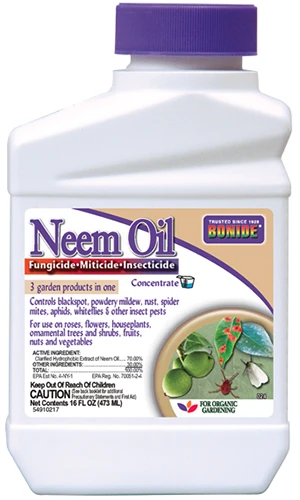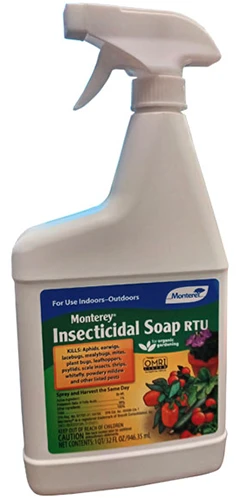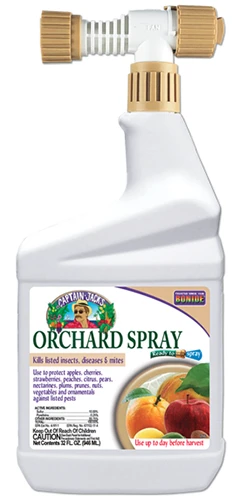If you grow bamboo in the landscape or indoors, you may have to address a spider mite infestation at some point.
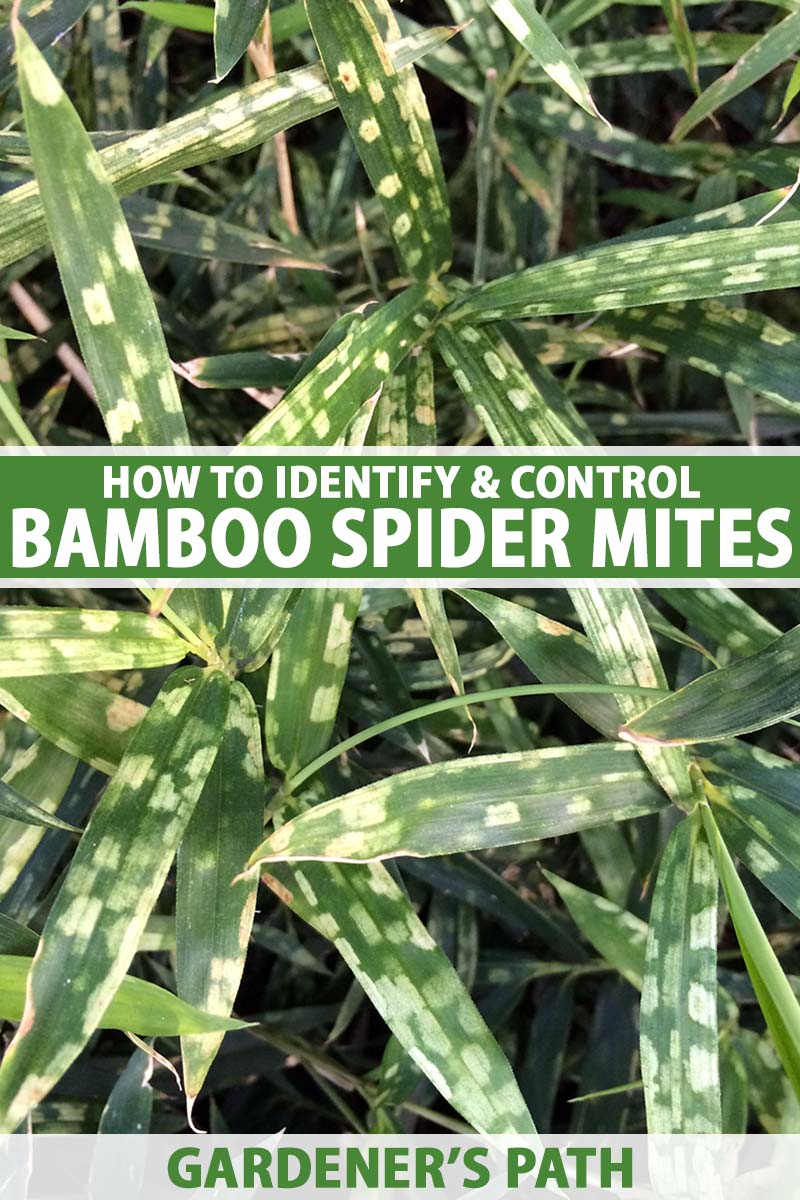
We link to vendors to help you find relevant products. If you buy from one of our links, we may earn a commission.
These aggressive, sapsucking pests thrive in warm, dry conditions. They are most likely to infest vulnerable plants that lack water and contain excess nitrogen, a nutrient they favor.
Our guide to growing bamboo discusses cultivation in the landscape.
This article zeroes in on bamboo spider mites. Read on and learn what to look for and how to manage an infestation.
Here’s what we’ll cover:
What You’ll Learn
What Are Bamboo Spider Mites?
Mites are sap-sucking pests, and although they are tiny, measuring less than 0.04 inches long, they can do severe damage and compromise the ornamental value of plants.
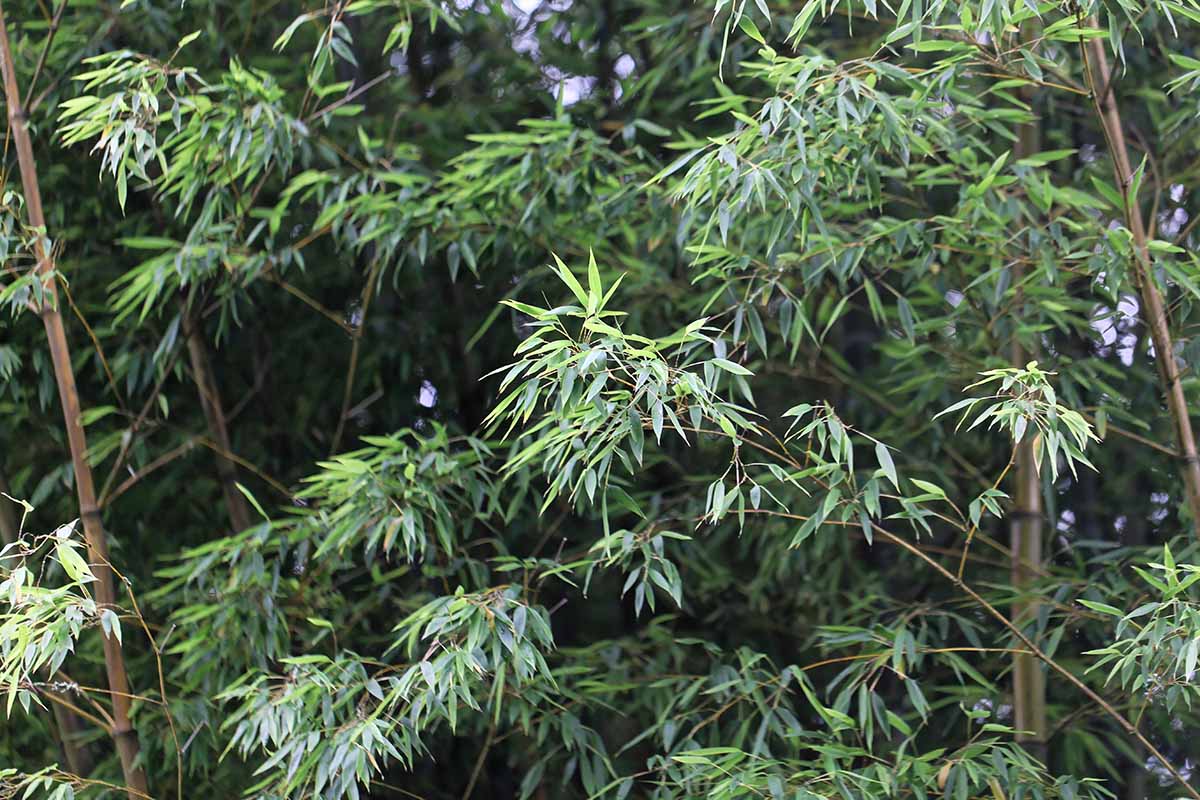
Numerous mites in multiple taxonomic genera feed on bamboo.
In one study, 45 species from 23 genera and nine taxonomic families were collected from moso growing in Fujian, China. Common moso, or tortoiseshell bamboo, Phyllostachys edulis, grows outdoors in USDA Hardiness Zones 7 to 10.
The mites that do the most damage to bamboo are in the following families:
- Tarsonemidae, aka thread-footed or white mites
- Eriophyidae, aka gall mites
- Tetranychidae, aka spider mites
Stigmeopsis (syn. Schizotetranychus) is a spider mite genus in the Tetranychidae family mentioned above.
Tetranychidae is a subclassification of the Acari, or mite order of insects. Stigmeopsis spider mites are the most destructive bamboo pests in the world.
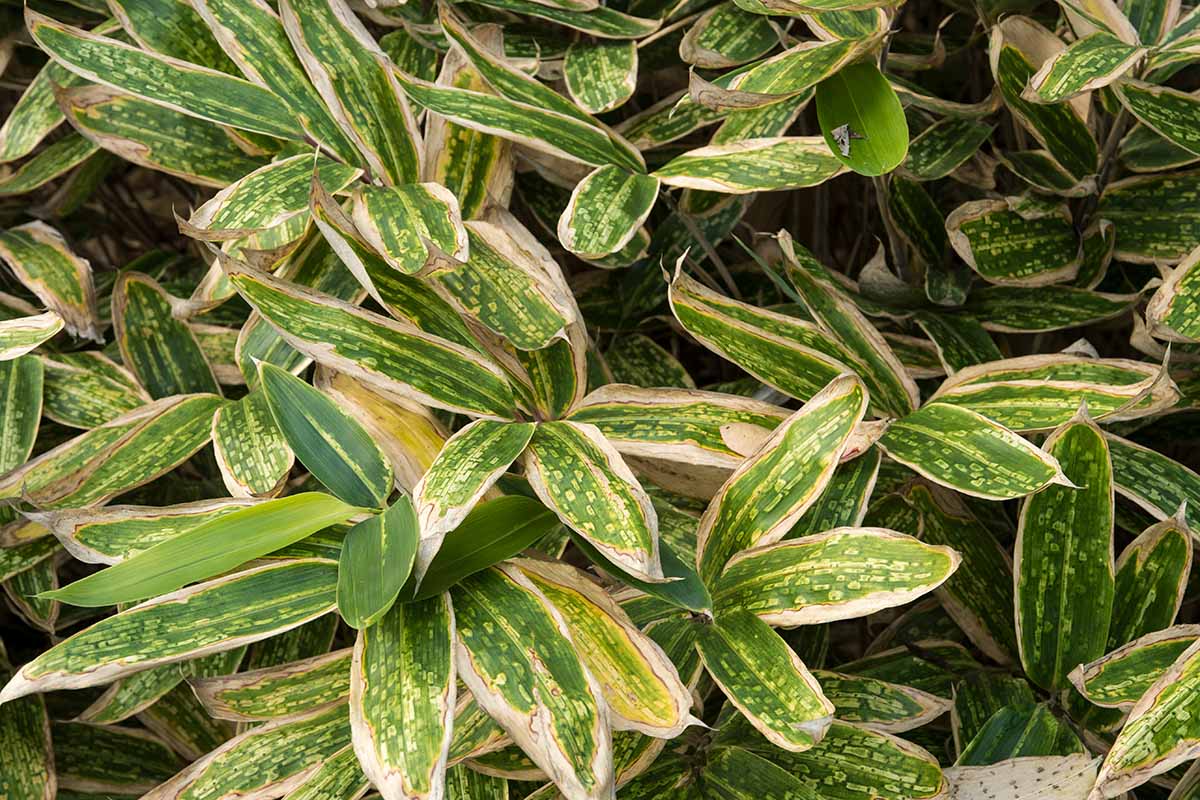
One type of Tetranychidae is Stigmeopsis longus.
It prefers bamboo in the Sasa genus, like S. veitchii, known as kuma bamboo grass or Nagasa bamboo. This type grows outdoors in Zones 6 to 9.
In addition to Phyllostachys and Sasa, other host genera for Stigmeopsis are Indocalamus, and Pleioblastus.
Bamboo Spider Mite Identification
Stigmeopsis have eight legs, a flattened pale yellow to greenish-yellow body, and greenish-black spots.
They live on the undersides of the leaves, mostly beneath white webbing. Frass, or black excreta, may be visible near the webbed nests.
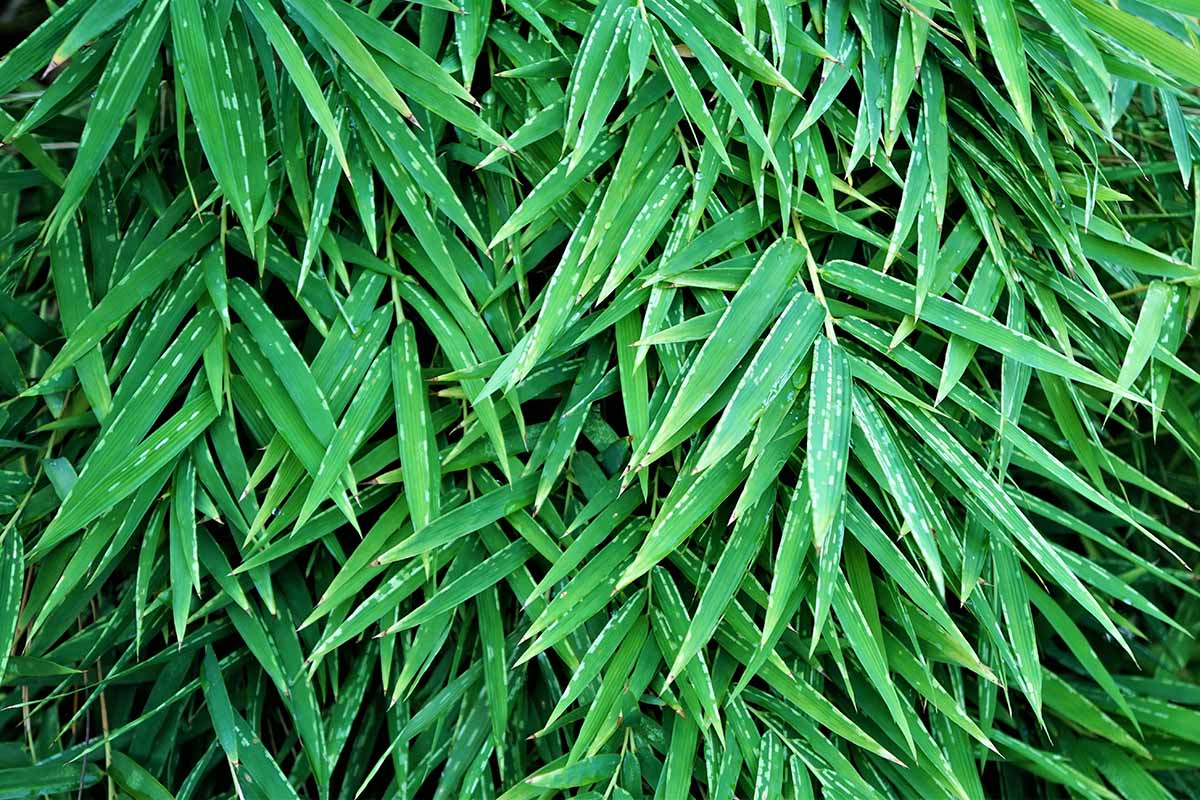
Telltale signs of an infestation are linear, pale yellow stippling or square to rectangular blotches on the leaf surfaces, and white webbing below.
As the plant loses moisture due to feeding, the tips and edges of the leaves turn brown as though they are not getting enough water. As the leaves dry up, they drop.
Extensive colonization and feeding compromise ornamental value, and in extreme cases, may lead to plant death.
Bamboo Spider Mite Biology and Life Cycle
In warm climates and indoors, spider mites remain active year-round. They only stop mating when the temperature falls below 52°F.

In cooler climes, they go into a semi-dormant state called diapause. As the days grow shorter and winter approaches, they stop feeding and reproducing and seek shelter in available crevices.
It is fascinating to note that the females shade to red for the winter, a color that often signifies danger in nature. What a great way to safeguard the species during winter slumber!
When spring comes, the days grow longer, the temperature increases, and the pests reemerge.
Once they settle on a host plant, the adults colonize the undersides of leaves, feeding, mating, laying eggs, and covering their territory with a thick, white cottony web.
Adults, young nymphs, and larvae may be visible outside the webbed colony, moving a distance from it to defecate.
As the colony grows, individual nests merge into long, flat strips of white webbing on the leaf undersides.
Each mite lives for only five to seven days, but multiple generations per growing season make for large populations.
Bamboo Spider Mite Organic Control Methods
If you discover an infestation, there are several approaches you can take, depending on the scope and the severity.
Cultural
Cultural control methods may ward off pests altogether. Preemptive steps to take are:
- Buying plants from reputable nurseries that show no signs of pest or disease damage.
- Maintaining health with organically-rich soil, medium moisture, and full sun to part shade.
- Using a slow-release, well-balanced fertilizer that is not overly rich in nitrogen.
Physical
Physical measures are readily-available controls to implement by hand upon the first sighting of pests and/or damage. Two recommendations are:
If you are propagating bamboo, the US Department of Agriculture recommends digging and placing the dormant rhizomes in hot water heated to 122°F for 10 minutes.
Then heel them in or temporarily cover them with sterilized sand (heated to 167°F) or sawdust until planting time.
Spray affected foliage with water using a high, concentrated setting on the garden hose nozzle.
Biological
The next level of pest combat is to use a natural approach, using a botanical product or beneficial insects, such as:
- Applying neem oil.
- Introducing predatory insects.
Bonide® neem oil is a natural insecticide, fungicide, and miticide derived from the seeds of the neem tree.
Spray neem oil on the tops and undersides of the leaves every seven to 14 days for light infestation and every five to seven days for heavier populations.
Note that while it is safe for indoor use, it has a strong, garlic-like odor.
Concentrated and ready-to-use (RTU) Bonide® Neem Oil are available from Arbico Organics. Mix concentrate with water and apply per manufacturer’s instructions.
Studies show that adult female predatory Neoseiulus fallacis mites can aid in Tetranychidae population reduction.
When introduced to bamboo, they invade the webbed nests and feed, reproduce, and mature on S. longus.
Predatory Mites, Neoseiulus fallacis
Introducing this predator per supplier’s instructions can help to eradicate small-scale infestations in greenhouses and the landscape.
Predatory Neoseiulus fallacis is available from Arbico Organics.
Organic Pesticides
When cultural controls and biological approaches aren’t enough, you can escalate treatment to the next level with:
- Insecticidal soap containing fatty acid salts.
- Pyrethrin spray.
Monterey Insecticidal Soap is a ready-to-use product for indoor and outdoor use.
Concentrate and ready-to-use (RTU) Monterey Insecticidal Soap is available from Arbico Organics.
Spray the tops and bottoms of the leaves once or twice a week as needed.
And Bonide® Captain Jack’s™ Orchard Spray is a pyrethrin-based product. Pyrethrins are natural pesticides derived from chrysanthemum flowers.
Bonide Captain Jack’s™ Orchard Spray
The manufacturer recommends a pre-season, proactive treatment to deter infestation.
Bonide® Captain Jack’s™ Orchard Spray is available from Arbico Organics.
Chemical Pesticide Control
When all else fails, you may resort to a chemical miticide treatment. Please note that these products are toxic and not suitable for indoor use.
Floramite is the only one registered for use on bamboo spider mites at this time. Its primary targets are adults and immature pests, with lower effectiveness against those in the egg stage.
Apply it to leaf surfaces and undersides for a potential three to four weeks of residual control, weather permitting.

This product is toxic and it may irritate the eyes, digestive system, respiratory tract, and skin. Wear protective eyewear and gloves for safe application. Do not ingest or inhale it.
Direct contact does not harm the predatory mite, Neosieulus fallacis. And residue on foliage does not harm other beneficial insects.
Floramite® SC is available from Amazon.
Note that regardless of whether you choose an organic or chemical treatment, extensive infestations of tall plants are not easily treated with sprays.
For plants over 10 feet tall, consult a professional.
Beat the Pests with Best Practices
If you grow bamboo and notice pale yellow stippling on the foliage and white webbing on the leaf undersides, you may have a spider mite infestation on your hands.
And having read this article, you are armed with the information you need to take care of it.
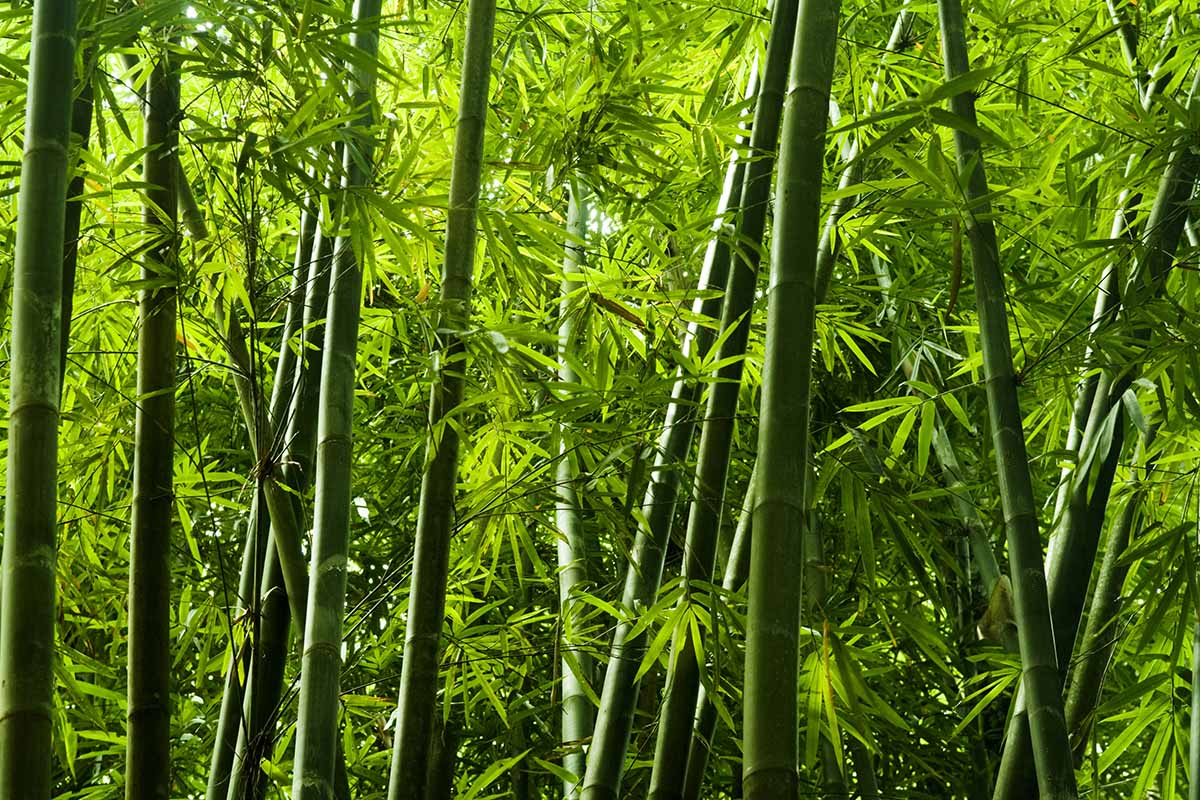
Going forward, it’s important to remember that healthy plants are the least vulnerable to pests and diseases. Best practices go a long way toward avoiding trouble.
Start with quality plants from a reputable nursery. Provide organically-rich soil, medium moisture, and a balanced fertilizer without excessive nitrogen.
Choose part shade locations in the warmest zones. Water early in the morning so the moisture soaks into the ground before the day heats up.
Proper hydration is essential indoors, too. For houseplants, you can increase the ambient humidity by misting the foliage and/or placing pots on a tray of pebbles with just enough water to cover them.
And finally, be vigilant. Examine your plants daily for the telltale signs of an infestation and act promptly to eradicate it.
Do you grow bamboo? Have you dealt with spider mites? Please share your experience with us in the comments section below.
If you grow bamboo, found this article useful, and want more helpful tips, we recommend the following:
